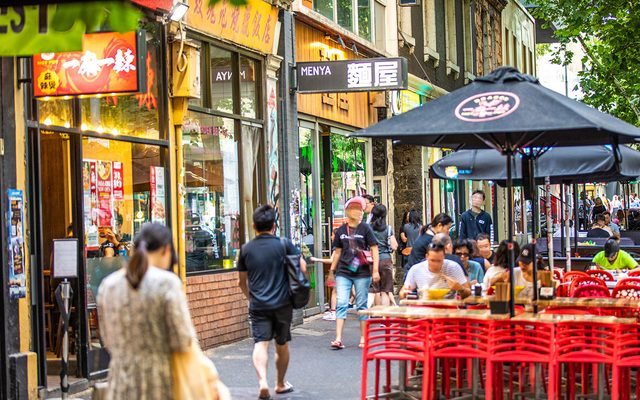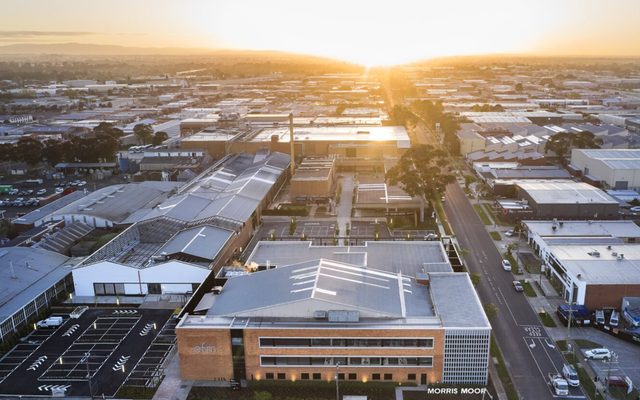This article is from the Australian Property Journal archive
TENANT demand for Sydney CBD office space has returned to pre Global Financial Crisis levels. The city has recorded its highest net absorption figure in more than three years, according to the Property Council of Australia’s Office Market Report.
In the six months to January 2011, the vacancy rate fell from 8.5% to 8.2% on the back of 62,417 sqm of space leased, which represents the strongest surge in demand since July 2007. At the same time, 66,434 sqm of space was added over the period and 15,501 sqm was withdrawn.
“We are now witnessing strong demand in the tenancy market – back to levels last seen prior to the GFC,” NSW executive director Glenn Byres said.
“We saw particular growth in demand in the Premium market, where net demand of 2,752 sqm triggered a further fall in the vacancy rate from 4.8% to 3.1%,” he added.
However in the A grade market, vacancy increased from 8.8% to 9.4% due to a significant supply of 46,751 sqm. The D grade market also saw vacancy rise from 2.6% to 6.6% due solely to net absorption of -8,264 sqm.
Meanwhile vacancy fell in all other markets, B grade down from 9.0% to 8.0%; C grade fell from 12.6% to 11.3%.
Byres said the strong demand for new office space means the 186,555 sqm of new stock due to enter the market in 2011 will be critical – though 58% is already pre-committed.
“The additional supply planning for the market this year will grow it by 3.9% – and take it over 5 million sqm for the first time,” he added.
Byres said the return of tenants further underlines the need for a long-term pipeline of development capacity across the CBD and he urged the NSW Government and City of Sydney to work together on a planning framework that has commercial office growth capacity until at least 2030.
In non-CBD market of North Shore, demand also rebounded with signs of life in Crows Nest, St Leonards and Chatswood.
The vacancy rate fell from 14.1% to 12.9% underpinned by net absorption of 12,284 sqm with North Sydney again accounting for the lion share of demand, with net absorption of 8,840 sqm, which resulted in the vacancy rate falling from 11.8% to 10.4%.
Chatswood vacancies declined from 19.2% to 18% vacancy, with an additional 3,426 sqm of demand and the Crows Nest and St Leonards also dipped from 15.4% to 14.7%, with 18 sqm in additional demand.
Byres said overall demand story was led by the A Grade market, where 10,473 sqm was leased resulting in the vacancy rate falling from 17.3% to 14.9%. Supply additions totalled just 538 sqm and 6,977 sqm was withdrawn.
The OMR shows 7,666 sqm of space is due to enter the market in 2011, followed by 39,930 sqm in 2012 and 31,000 sqm from 2013 onwards.
The fairytale also continued in North Ryde, the OMR reported that the vacancy rate fell from 11.3% to 10.3% despite 16,700 sqm of space added. Net demand was 19,169 sqm.
A grade vacancy rates fell from 12% to 9.9% in the past six months, with net demand increasing to 25,986 sqm. B Grade vacancy rates increased from 8.2% to 9.2%, with a drop in demand of 2,466 sqm. C Grade lost demand totalling 4,351 sqm – resulting in a leap in the vacancy rate from 28% to 35.2%.
Byres said no new office space is planned over the short to medium term.
The office markets outside of Sydney also felt the ripple effects of stronger tenant demand.
Parramatta also saw signs of life returning, the vacancy rate decreased from 10.8% to 9.6% with net absorption of 8,279 sqm. The strongest turnaround came in the B Grade market, where extra demand of 8,458 sqm led to a drop in the vacancy rate from 12.4% to 7%.
A Grade also recorded 2,326 sqm of additional demand in the past six months, with the vacancy rate falling from 2.9% to 1.8%. The C Grade vacancy rate of 18.3% represents the highest level since July 1995, and the D Grade vacancy rate of 15.7% is the highest since July 1994.
Byres said no new space is due to enter the market in 2011 but 25,050 sqm is scheduled for 2012.
In the Newcastle CBD market, the vacancy rate declined from 14.5% to 11.5%. Net absorption was 8,068 sqm over the year, and was reflected in all grades, except D grade.
Supply additions were minimal – totalling just 586 sqm over the past 12 months – and there is no planned space in the pipeline over the next two years.
Property Council’s Hunter Chapter Edward Crawford said demand for office space in the Newcastle CBD is now strong and led to a significant fall in the vacancy rate.
“With no new space planned the next two years it is easy to see a shortage of office space as a real prospect. The combination of reduced vacancy rates and increased demand across all grades except D Grade suggests good signs ahead for the local economy.
“However, we need to work smarter on creating the right investment climate for the Newcastle CBD and this will require leadership and action from federal, state and local governments.” Crawford concluded.
However in Wollongong city centre, vacancy rates increased from 8.1% to 9.0%.
Chair of the Property Council’s Illawarra Chapter David Laing said the net absorption in the A grade sector was 8,127 sqm over the past 12 months – and vacancy rates fell from 0.5% to 0.4%. But there was some loss of demand in other grades.
Supply additions totalled 8,055 sqm and at the same time in the B Grade demand were -1,283 sqm, C Grade -399 sqm and D -350 sqm.
Laing said investors are demanding quality which is concerning given no new space is scheduled over the next two years.
He added that the result only highlighted the need for the public and private sector to work together to see through WCC’s Wollongong CBD Action Plan in its entirety.
Australian Property Journal



